HOME > Exhibitions > Past
-
Special Exhibition Celebrating the Museum's 80th Anniversary
The National Treasure Irises Screens 【ENDED】
The Allure of Color -
Saturday, April 17 – Sunday, May 16, 2021
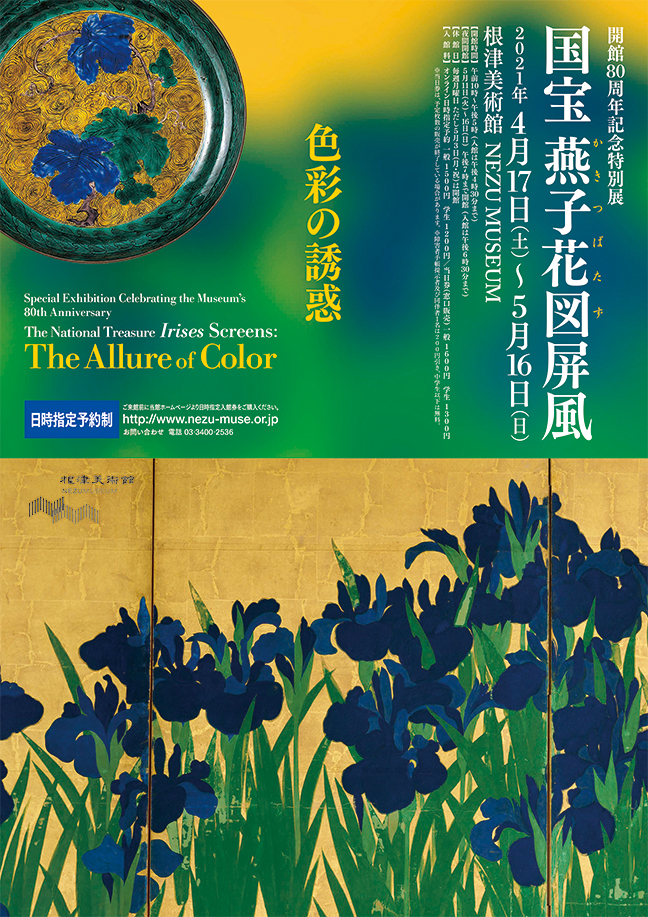

| Closed | Mondays, except May 3 |
|---|---|
| Hours |
10 a.m. - 5 p.m.(last entry: 4:30 p.m.) Cancellation of the Evening Museum. |
| General admission |
Timed-entry ticket (online) : Adult 1500 yen, Student 1200 yen Same-day ticket (at the door) : Adult 1600 yen, Student 1300 yen |
| Gallery | 1/2 |
In his Irises folding screens, Ogata Kōrin (1657-1716) depicted clusters of irises on a large gold-foiled picture plane using only azurite blue and malachite green pigments.
These three colors, blue, green, and gold (or yellow), are often combined; together they have a distinctive tradition in Japan and in the East in general. The vigorous color sense of this work also reflects an aesthetic characteristic of the Edo period.
This exhibition also includes a sutra copied in gold pigment on indigo-dyed dark blue paper, Buddhist paintings from the middle ages to which gold has been added to a design with blue and green as the dominant colors, and a kinpeki sansui (Chinese: jinbi shanshui) or landscape in gold and blue-green, a genre that dates back to the Tang period (618-907). They are joined by ceramics from the Momoyama through the Edo periods in which these three colors play key roles, including innovative ko-kutani and ki-seto wares. With the addition of several other golden folding screens using the same colors, this exhibition attempts to shed new light on the Irises screens.
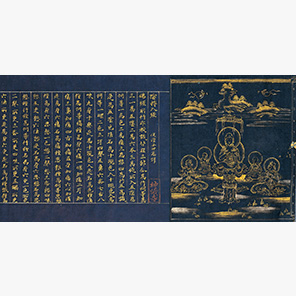

- Onji-nyū-kyō Sutra, known as Jingoji-kyō
-
Handscroll; gold on blue paper Japan Heian period, 12th century
Nezu Museum - Using dyed paper when copying sutras was initially an attempt to prevent insect damage. Over time, adorning sutras by copying the text in gold pigment on paper dyed blue with indigo became a standard pattern.
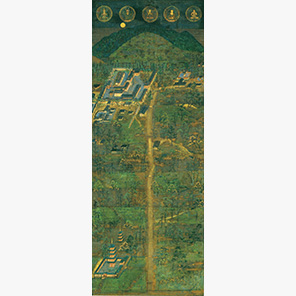


- Kasuga Shrine Mandala (Kasuga miya mandara)
-
Hanging scroll; ink and color on silk Japan Kamakura period, 14th century
Nezu Museum - This mandala depicts the main buildings of the Kasuga Shrine in Nara, surrounded by the verdant Kasuga Plain, with heavily forested Mount Mikasa in the background. The use of gold pigment to depict the approach to the shrine, rising straight up from the foot of the mandala, signifies that here lies the Pure Land.
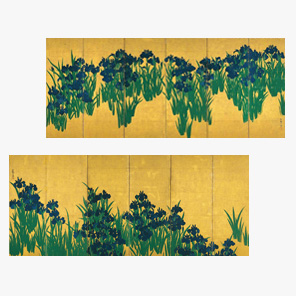


-
Iriese
By Ogata Kōrin -
Pair of six-panel screens; ink and color on gold-foiled paper Japan Edo period, 18th century
Nezu Museum - Kōrin, who was born and raised in a Kyoto family of merchants purveying deluxe textiles to the elite, grew up surrounded by colors and designs. When he had the opportunity to use costly pigments that produced colors well, he must have been exhilarated.
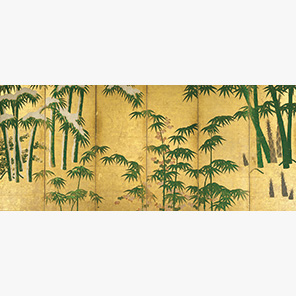
- Bamboos in the Four Seasons
-
Six-panel screen; ink and color on gold-foiled paper Japan Muromachi period, 16th century
Private Collection - Here the changing seasons and the time span of the annual cycle are expressed through bamboo, which is an evergreen plant. The beginnings of folding screens depicting one type of plant on a plain gold ground can be found in Yamato-e from the Muromachi period, in the fifteenth to sixteenth centuries.
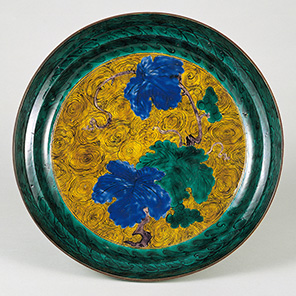

-
Large Dish with Grape Design
Hizen ware -
Porcelain with overglaze polychrome enamel Japan Edo period, 17th century
Nezu Museum - Ceramics such as these, with yellow hues glowing vividly in contrast to blues and greens, suggest the influence of southern Chinese three-color ware (Japanese: kanan sansai), which was exported to Japan. The same three colors here generate an exotic appeal.
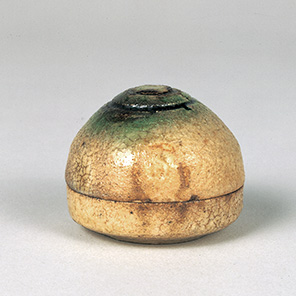

- Jewel-Shaped Incense Container
Mino ware, ki-seto type -
Porcelain with overglaze polychrome enamel Japan Momoyama period, 16th-17th centuries
Nezu Museum - The tasteful color sense of ki-seto ware, with green often used as an accent on a yellow base, would seem to reflect an early Edo period aesthetic.










